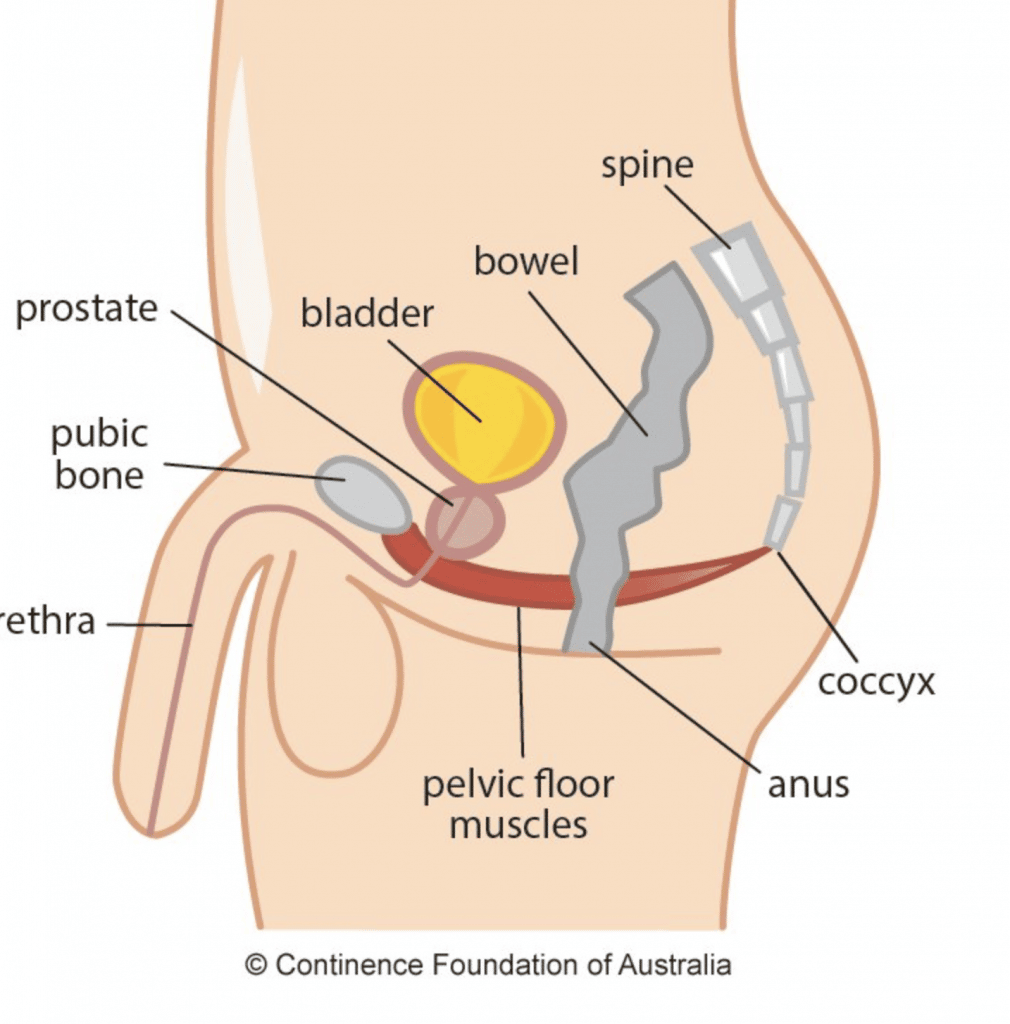
Incontinence and Pelvic Floor Dysfunction in Men
In our blog, Women and Incontinence, we discussed female pelvic floor dysfunction and incontinence for women. In this article, we will address the same issues about men.
Men can have the same types of incontinence as women; Stress Incontinence, where sneezing, coughing, exercise, etc., can cause urine leakage; Urgency Incontinence, which is a sudden uncontrollable urge to urinate. And they can also have a combination of the two.
Some of the contributing factors are the same as for women, such as obesity, age, constipation, and certain diseases like Multiple Sclerosis, Parkinson's Disease, and diabetes. Some drugs, for example diuretics, can also be a factor.
What is unique to men is the prostate gland.

The prostate gland sits below the bladder, and the urethra passes through the gland. If the prostate gland enlarges, it pressures the bladder and constricts the urethra. The prostate enlarges if cancer is present or if there is inflammation causing prostatitis. Prostatitis can have a bacterial infection associated with it, or there may not be any infection, just inflammation.
Prostatitis causes enlargement of the gland known as Benign Prostatic Hypertrophy (BPH) affects about 50% of men in their 60s and 90% in their 80s. Surgery for cancer of the prostate and surgery to reduce to the size of the prostate can damage the nerves that control the bladder or the urethral sphincter thus causing incontinence. Some tips to help incontinence include reducing fluid intake, especially coffee and alcohol, bladder training, and Kegel exercises.
Pelvic Floor Dysfunction
Also helpful is a correct diagnosis. Often the underlying problem is Pelvic Floor Dysfunction (PFD). PFD can be present with or without prostatitis. The pelvic floor muscles can be affected by stress, bacteria, and inflammation. Also, direct trauma to the area or prolonged sitting can cause a problem. These factors cause a muscle response resulting in PFD and resulting symptoms.
Pelvic floor dysfunction symptoms
There are several symptoms associated with pelvic floor dysfunction. If you are diagnosed with pelvic floor dysfunction, you may experience symptoms including:
- Erectile Dysfunction
- Pain with an erection and during or after intercourse
- Constipation
- Pain in the anal area
- Pain in the testicles, groin, or perineum
- Weak urinary flow
- Excessive night-time urination
- Difficulty starting urination
- Feeling of incompletely emptying bladder
- Involuntary leakage of stool
Watch this great video demonstrating the pelvic floor muscles
The EMSELLA chair is a great way to address PFD. The EMSELLA exercises every muscle of your pelvic floor. There is no other way to do this, no self-exercise or other type of equipment can do this! It is essential to rule out cancer or a bacterial infection. Absent these; there's no better way to treat PFD than with this amazing technology. See why we call the EMSELLA the "magic chair."



